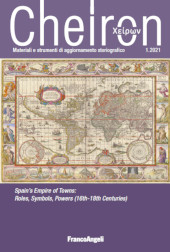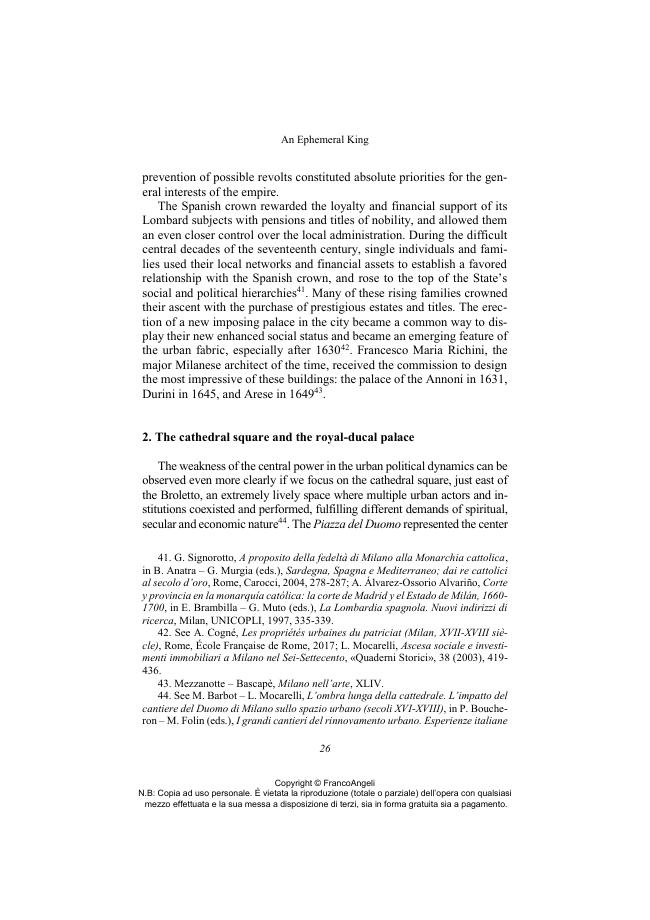An ephemeral king : political power and urban space in spanish Milan
13-38 p.
Nel XVI e XVII secolo, mentre ambiziose riorganizzazioni principesche del tessuto urbano trasformarono la maggior parte delle città italiane, Milano rimase sostanzialmente invariata. Nel tentativo di assicurarsi pace e stabillità in una regione essenziale dal punto di vista strategico per il sistema imperiale, la corte di Madrid abdicò a buona parte del potere locale a favore del patriziato e della Chiesa. Questo articolo suggerisce che i sovrani spagnoli, in uno sforzo volto a non inimicarsi le elites urbane, si astennero anche dall'esibire il loro potere nella fabbrica cittadina attraverso nuovi sviluppi urbanistici, la costruzione di edifici maestosi o semplicemente l'esibizione di loro ritratti, e limitarono la loro presenza simbolica alle periodiche cerimonie reali e ad architetture effimere. [Testo dell'editore].
In the 16th and 17th centuries, while the ambitious reorganization of the urban fabric sponsored by princes and ruling elites transformed most Italian cities, Spanish Milan did not undergo any substantial renovations. In order to preserve peace and stability in an essential strategic region of the empire, the monarchy abdicated a high degree of local power to the patriciate and the church. This article suggests that the Spanish kings, in an effort not to antagonize the local elites, also refrained from displaying their might within the urban fabric through largescale developments, new majestic buildings or even permanent depictions of themselves, and limited their symbolical presence to periodical celebrations and ephemeral architectures. [Publisher's text].
-
Articles from the same issue (available individually)
-
Information
ISSN: 1127-8951
DISCIPLINES
KEYWORDS
- Milano, impero spagnolo, spazio urbano, cerimoniali, corte, Milan, Spanish Empire, Urban Space, Ceremonials, Court



